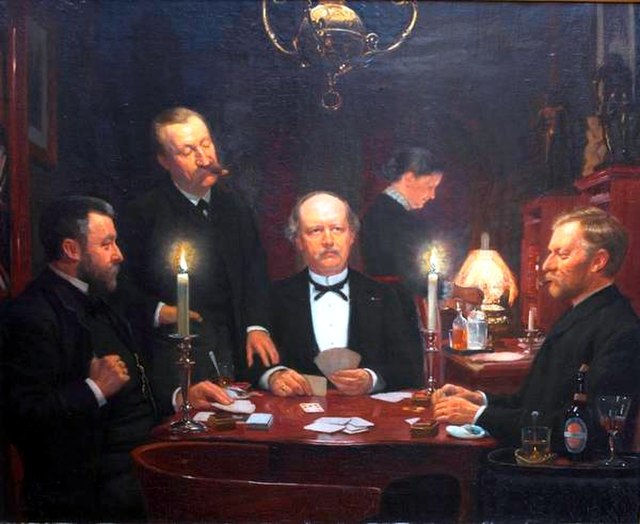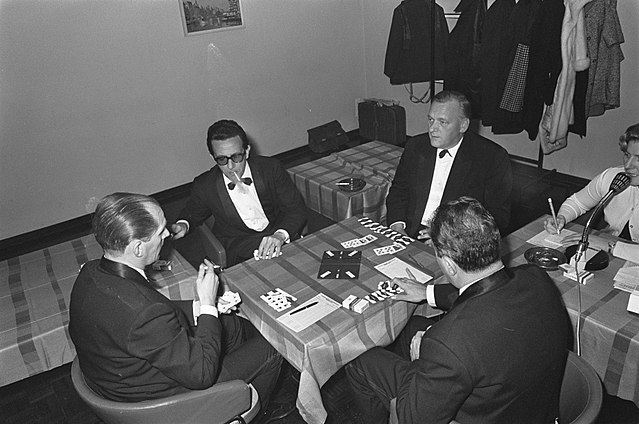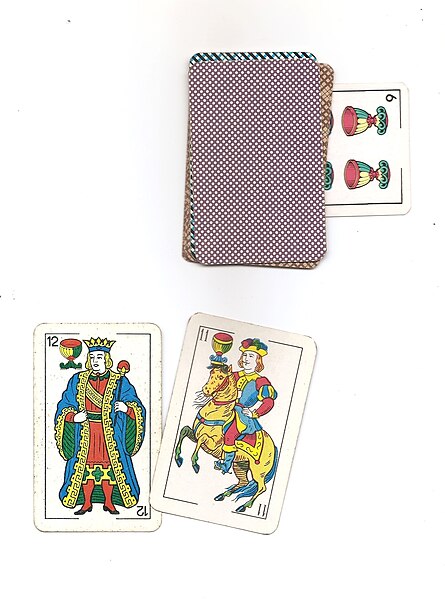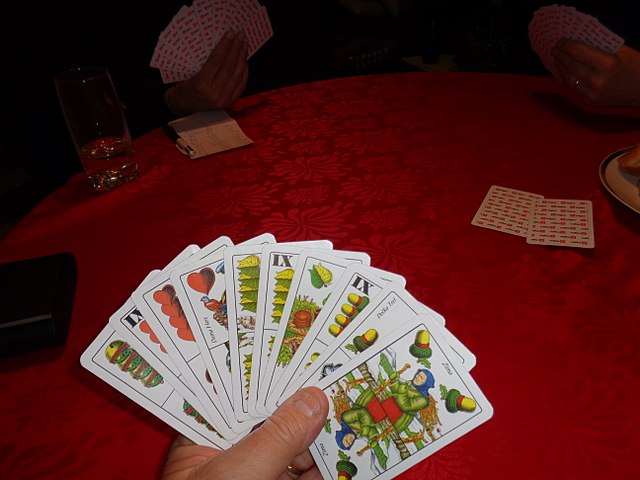A trick-taking game is a card or tile-based game in which play of a hand centers on a series of finite rounds or units of play, called tricks, which are each evaluated to determine a winner or taker of that trick. The object of such games then may be closely tied to the number of tricks taken, as in plain-trick games such as contract bridge, whist, and spades, or to the value of the cards contained in taken tricks, as in point-trick games such as pinochle, the tarot family, briscola, and most evasion games like hearts. Trick-and-draw games are trick-taking games in which the players can fill up their hands after each trick. In most variants, players are free to play any card into a trick in the first phase of the game, but must follow suit as soon as the stock is depleted. Trick-avoidance games like reversis or polignac are those in which the aim is to avoid taking some or all tricks.

A trick of four cards. North led the 10♠. Usually all players must follow suit and play a spade unless they have none. East does so with the K♠. South does not have a spade, so plays the J♦, and West the 7♥. In a notrump game, east wins the trick, having played the highest card of the suit led (unless the game is an ace–ten game, with 10 being higher than the king, making north win the trick). However, if diamonds or hearts are trumps, south or west respectively win.
"The Four Friends Playing Ombre" (1888) by Malthe Engelstedt
Bridge is played between two partnerships
A 6 of cups is tucked under the deck in a game of Brisca, to show that cups is the trump suit
A card game is any game that uses playing cards as the primary device with which the game is played, whether the cards are of a traditional design or specifically created for the game (proprietary). Countless card games exist, including families of related games. A small number of card games played with traditional decks have formally standardized rules with international tournaments being held, but most are folk games whose rules may vary by region, culture, location or from circle to circle.
The Card Players, 17th-century painting by Theodoor Rombouts
Preferans, a trick-taking card game version popular in Croatia
The Card Players, 1895 by Paul Cézanne
Historically, card games such as whist and contract bridge were opportunities for quiet socializing, as shown in this 1930s magic lantern slide photo taken in Seattle, Washington.








